Effects of Temperature, Axial Ligand, and Photoexcitation on the Structure and Spin-State of Nickel(II) Complexes with Water-Soluble 5,10,15,20-Tetrakis(1-methylpyridinium-4-yl)porphyrin
Abstract
1. Introduction
- -
- Planar or normal metal porphyrins are formed when the radius of the coordinating metal ion is less than about 80–90 pm.
- -
- Out-of-plane porphyrins (OOP = out of plane or SAT = sitting atop) are formed when the radius of the coordinating metal ion is larger than 80–90 pm, so it is displaced from the coordination cavity, distorting it [7].
2. Results and Discussion
2.1. Photophysical Properties and Spin States
2.2. Temperature-Affected Coordination and Spin-State Equilibrium
2.3. Influence on the Coordination and Spin-State Equilibrium by Photoinduced Ligand Elimination
2.4. Ground-State Interaction with TEOA
2.4.1. Changes in the Absorption Spectrum of Ni(II)TMPyP4+ as a Function of TEOA
- A steeply rising phase (0–0.05 M): Here, an n-particle system was assumed, which did not contain the final light-absorbing triethanolamine complex.
- A linearly increasing phase (0.05–0.25 M): In this range, the isosbestic point migrated steadily, suggesting an equilibrium of three light-absorbing particles with increasing amounts of the final triethanolamine complex.
- A constant range (0.25–0.5 M): The isosbestic point did not change, and two light-absorbing particles were present (as the value approached 0.5 M, the difference in the measured spectra became smaller and smaller, so their intersection became more uncertain).
2.4.2. Characterization of the Ni(II)TMPyP4+–TEOA Associate
(TEOA)] = [Ni(II)TMPyP4+] × (1 + KH2O × [H2O] + KTEOA × [TEOA])
3. Materials and Methods
3.1. Materials
3.2. Preparation of Ni(II)TMPyP4+ Samples
3.3. Methods
4. Conclusions
Supplementary Materials
Author Contributions
Funding
Institutional Review Board Statement
Informed Consent Statement
Data Availability Statement
Conflicts of Interest
References
- Cho, K.Y.; Kim, H.-J.; Do, X.H.; Seo, J.Y.; Choi, J.-W.; Lee, S.-H.; Yoon, H.G.; Hwang, S.S.; Baek, K.-Y. Synthesis of water soluble metalloporphyrin-cored amphiphilic star block copolymer photocatalysts for an environmental application. Res. Chem. Intermed. 2018, 44, 4663–4684. [Google Scholar] [CrossRef]
- Fukuzumi, S.; Lee, Y.-M.; Nam, W. Photocatalytic redox reactions with metalloporphyrins. J. Porphyr. Phthalocyanines 2020, 24, 21–32. [Google Scholar] [CrossRef]
- Mlakić, M.; Šalić, A.; Bačić, M.; Zelić, B.; Šagud, I.; Horváth, O.; Škorić, I. Photocatalytic Oxygenation of Heterostilbenes—Batch versus Microflow Reactor. Catalysts 2021, 11, 395. [Google Scholar] [CrossRef]
- Rao, H.; Lim, C.-H.; Bonin, J.; Miyake, G.M.; Robert, M. Visible-Light-Driven Conversion of CO2 to CH4 with an Organic Sensitizer and an Iron Porphyrin Catalyst. J. Am. Chem. Soc. 2018, 140, 17830–17834. [Google Scholar] [CrossRef] [PubMed]
- Zhang, W.; Lai, W.; Cao, R. Energy-Related Small Molecule Activation Reactions: Oxygen Reduction and Hydrogen and Oxygen Evolution Reactions Catalyzed by Porphyrin- and Corrole-Based Systems. Chem. Rev. 2017, 117, 3717–3797. [Google Scholar] [CrossRef] [PubMed]
- Nakazono, T.; Parent, A.R.; Sakai, K. Improving Singlet Oxygen Resistance during Photochemical Water Oxidation by Cobalt Porphyrin Catalysts. Chem. A Eur. J. 2015, 21, 6723–6726. [Google Scholar] [CrossRef]
- Valicsek, Z.; Horváth, O. Application of the electronic spectra of porphyrins for analytical purposes: The effects of metal ions and structural distortions. Microchem. J. 2013, 107, 47–62. [Google Scholar] [CrossRef]
- Imran, M.; Kiss, M.; Valicsek, Z.; Horváth, O. Formation, Photophysics, and Photochemistry of Anionic Lanthanide(III) Mono- and Bisporphyrins. Molecules 2019, 24, 1309. [Google Scholar] [CrossRef]
- Hu, X.; Ogawa, K.; Kiwada, T.; Odani, A. Water-soluble metalloporphyrinates with excellent photo-induced anticancer activity resulting from high tumor accumulation. J. Inorg. Biochem. 2017, 170, 1–7. [Google Scholar] [CrossRef]
- Li, Y.; Li, G.; Zhang, Q.; Li, Y.; Jia, Q.; Zhang, W.; Feng, X.; Xu, W.; Liu, J. Heavy atom effect on water-soluble porphyrin photosensitizers for photodynamic therapy. Chem. Phys. Lett. 2021, 784, 139091. [Google Scholar] [CrossRef]
- Hou, B.; Zhang, W.; Li, C.; Sun, X.; Feng, X.; Liu, J. Synthesis and in vitro biological evaluation of novel water-soluble porphyrin complexes for cancer photodynamic therapy. Appl. Organomet. Chem. 2022, 36, e6598. [Google Scholar] [CrossRef]
- Horváth, O.; Valicsek, Z.; Fodor, M.A.; Major, M.M.; Imran, M.; Grampp, G.; Wankmüller, A. Visible light-driven photophysics and photochemistry of water-soluble metalloporphyrins. Coord. Chem. Rev. 2016, 325, 59–66. [Google Scholar] [CrossRef]
- Mason, G.M.; Trudell, L.G.; Branthaver, J.F. Review of the stratigraphic distribution and diagenetic history of abelsonite. Org. Geochem. 1989, 14, 585–594. [Google Scholar] [CrossRef]
- Wondimagegn, T.; Ghosh, A. Theoretical Modeling of Putative Ni(III)−F 430 Intermediates of Methylcoenzyme M Reductase. J. Am. Chem. Soc. 2001, 123, 1543–1544. [Google Scholar] [CrossRef]
- Han, Y.; Wu, Y.; Lai, W.; Cao, R. Electrocatalytic Water Oxidation by a Water-Soluble Nickel Porphyrin Complex at Neutral pH with Low Overpotential. Inorg. Chem. 2015, 54, 5604–5613. [Google Scholar] [CrossRef]
- Han, Y.; Fang, H.; Jing, H.; Sun, H.; Lei, H.; Lai, W.; Cao, R. Singly versus Doubly Reduced Nickel Porphyrins for Proton Reduction: Experimental and Theoretical Evidence for a Homolytic Hydrogen-Evolution Reaction. Angew. Chem. Int. Ed. 2016, 55, 5457–5462. [Google Scholar] [CrossRef]
- Kim, D.; Su, Y.O.; Spiro, T.G. Resonance Raman frequencies and core size for low- and high-spin nickel porphyrins. Inorg. Chem. 1986, 25, 3988–3993. [Google Scholar] [CrossRef]
- Chen, L.X.; Jäger, W.J.H.; Jennings, G.; Gosztola, D.J.; Munkholm, A.; Hessler, J.P. Capturing a Photoexcited Molecular Structure Through Time-Domain X-ray Absorption Fine Structure. Science 2001, 292, 262–264. [Google Scholar] [CrossRef]
- Kruglik, S.G.; Ermolenkov, V.V.; Orlovich, V.A.; Turpin, P.-Y. Axial ligand binding and release processes in nickel(II)-tetraphenylporphyrin revisited: A resonance Raman study. Chem. Phys. 2003, 286, 97–108. [Google Scholar] [CrossRef]
- Thies, S.; Bornholdt, C.; Köhler, F.; Sönnichsen, F.D.; Näther, C.; Tuczek, F.; Herges, R. Coordination-Induced Spin Crossover (CISCO) through Axial Bonding of Substituted Pyridines to Nickel–Porphyrins: σ-Donor versus π-Acceptor Effects. Chem. A Eur. J. 2010, 16, 10074–10083. [Google Scholar] [CrossRef]
- Jentzen, W.; Unger, E.; Song, X.-Z.; Jia, S.-L.; Turowska-Tyrk, I.; Schweitzer-Stenner, R.; Dreybrodt, W.; Scheidt, W.R.; Shelnutt, J.A. Planar and Nonplanar Conformations of (meso -Tetraphenylporphinato)nickel(II) in Solution As Inferred from Solution and Solid-State Raman Spectroscopy. J. Phys. Chem. A 1997, 101, 5789–5798. [Google Scholar] [CrossRef]
- Pasternack, R.F.; Spiro, E.G.; Teach, M. Solution properties of nickel(II) tetra(4-N-methylpyridyl) porphine and the influence of acetone, pyridine and imidazole. J. Inorg. Nucl. Chem. 1974, 36, 599–606. [Google Scholar] [CrossRef]
- Bütje, K.; Nakamoto, K. Electronic spectra, resonance raman spectra and solution properties of water-soluble Cu(II), Ni(II) and Co(III) porphyrins. Inorganica Chim. Acta 1990, 167, 97–108. [Google Scholar] [CrossRef]
- Major, M.M.; Horváth, O.; Fodor, M.A.; Fodor, L.; Valicsek, Z.; Grampp, G.; Wankmüller, A. Photophysical and photocatalytic behavior of nickel(II) 5,10,15,20-tetrakis(1-methylpyridinium-4-yl)porphyrin. Inorg. Chem. Commun. 2016, 73, 1–3. [Google Scholar] [CrossRef]
- Ludwig, J.; Gröbner, J.; Dommaschk, M.; Huber, L.M.; Peters, M.K.; Hövener, J.-B.; Herges, R. Ni(II)porphyrins as pH dependent light-driven coordination-induced spin-state switches (LD-CISSS) in aqueous solution. J. Porphyr. Phthalocyanines 2020, 24, 480–488. [Google Scholar] [CrossRef]
- Habib, A.; Serniabad, S.; Khan, M.S.; Islam, R.; Chakraborty, M.; Nargis, A.; Quayum, M.E.; Alam, M.A.; Rapozzi, V.; Tabata, M. Kinetics and mechanism of formation of nickel(II)porphyrin and its interaction with DNA in aqueous medium. J. Chem. Sci. 2021, 133, 83. [Google Scholar] [CrossRef]
- Shannon, R.D. Revised effective ionic radii and systematic studies of interatomic distances in halides and chalcogenides. Acta Crystallogr. Sect. A 1976, 32, 751–767. [Google Scholar] [CrossRef]
- Tabata, M.; Miyata, W.; Nahar, N. Kinetics and Mechanism of Metal-Substitution Reaction of Homodinuclear Mercury(II) Porphyrin with Zinc(II) with Particular Reference to a Heterodinuclear Metalloporphyrin Intermediate. Inorg. Chem. 1995, 34, 6492–6496. [Google Scholar] [CrossRef]
- Tung, J.-Y.; Chen, J.-H.; Liao, F.-L.; Wang, S.-L.; Hwang, L.-P. Crystal and Molecular Structure of an Eight-Coodinate N -Methyltetraphenylporphyrin Complex: Diacetato(N-methyl-meso-tetraphenylporphyrinato)thallium(III). Inorg. Chem. 2000, 39, 2120–2124. [Google Scholar] [CrossRef]
- Rabek, J.F. Experimental Methods in Photochemistry and Photophysics (Part 2); Wiley: New York, NY, USA, 1982; pp. 944–946. [Google Scholar]
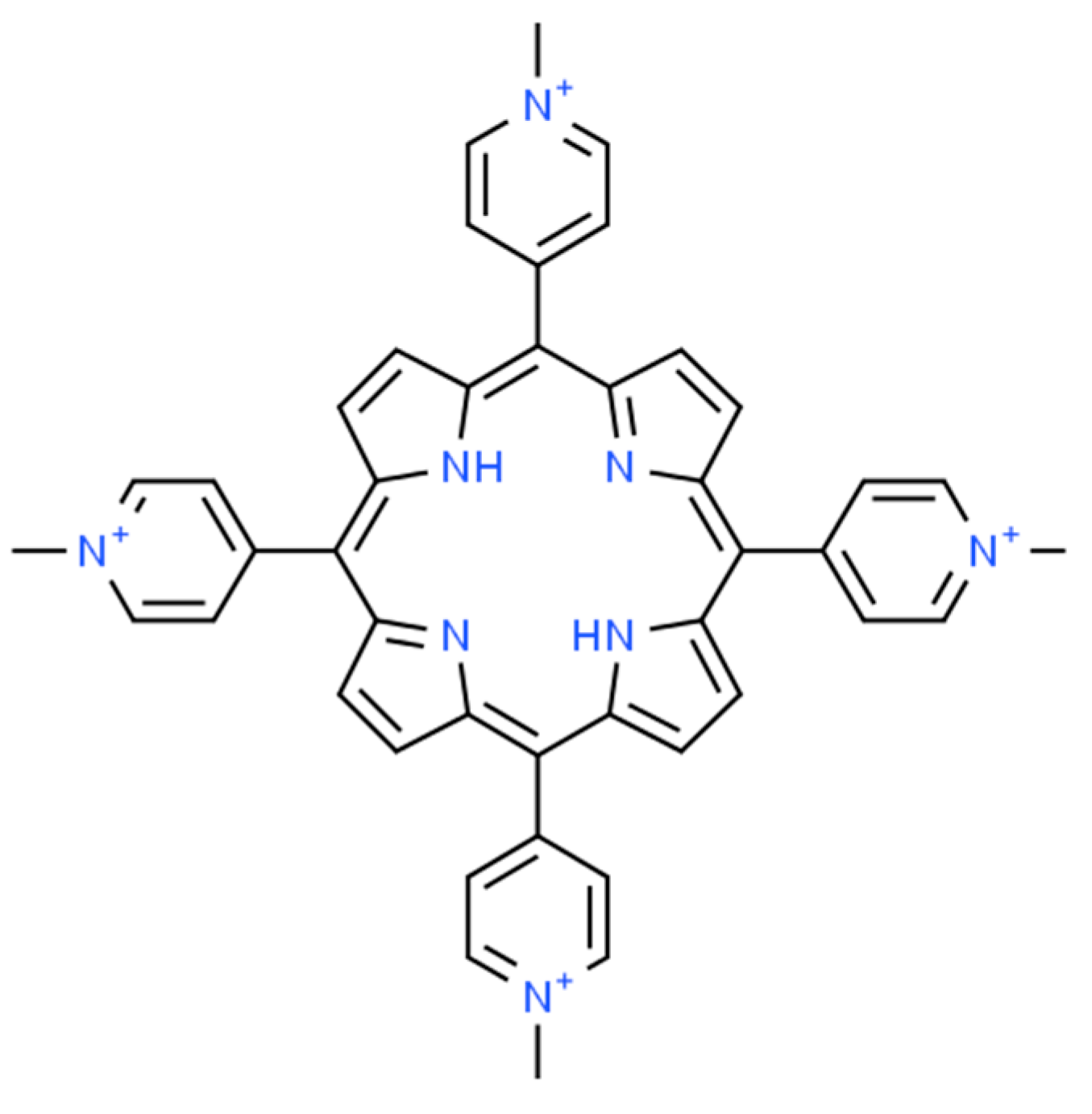
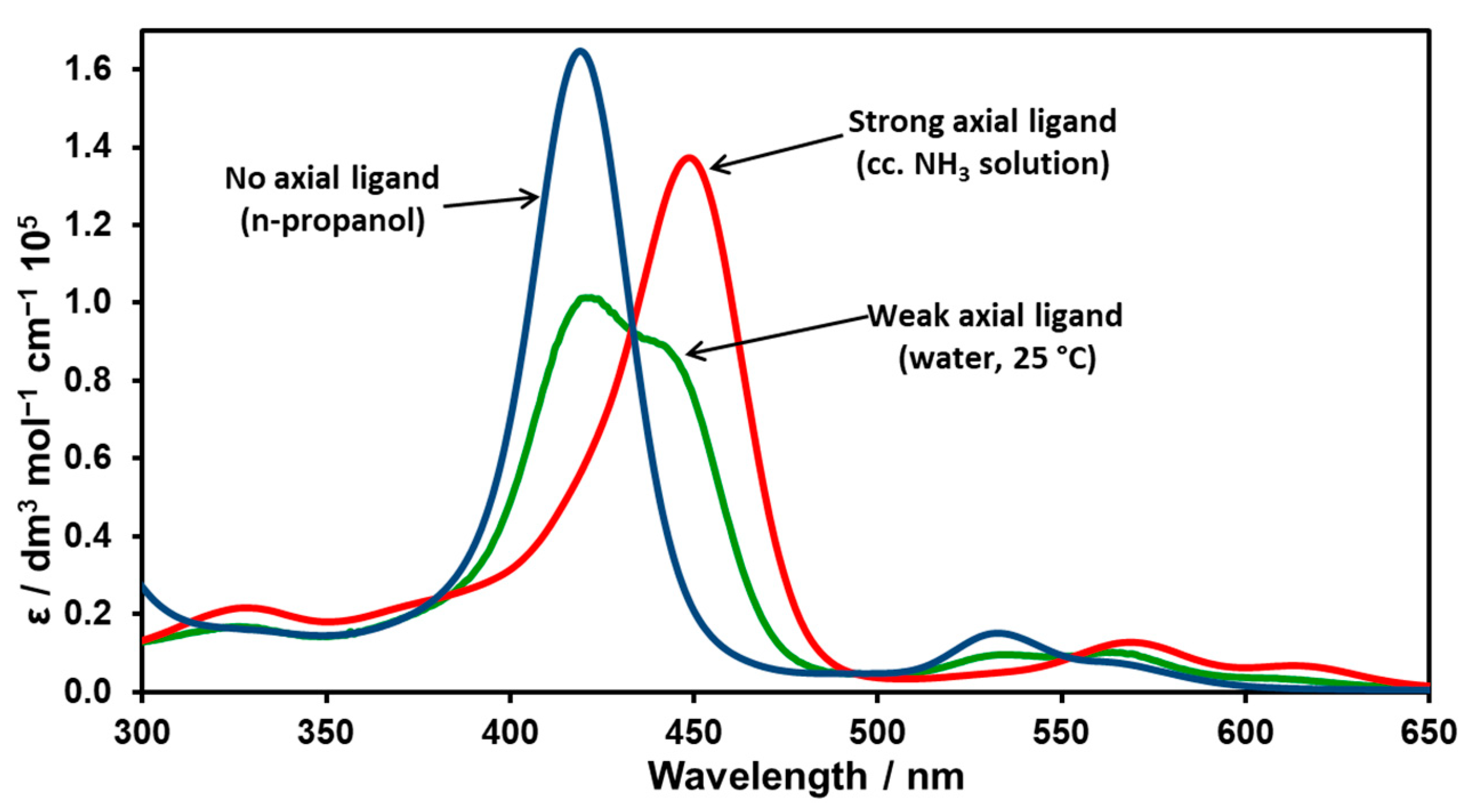


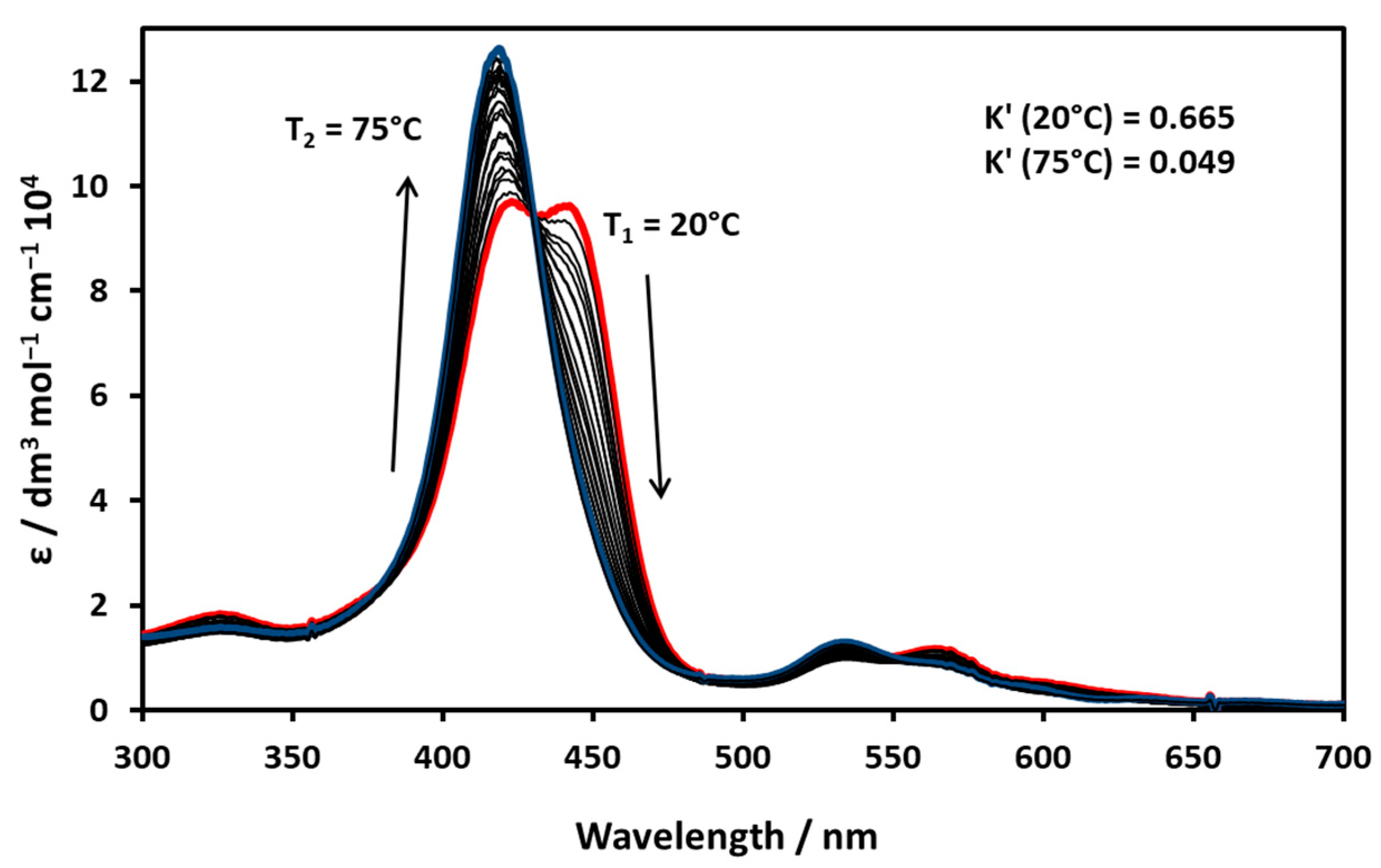
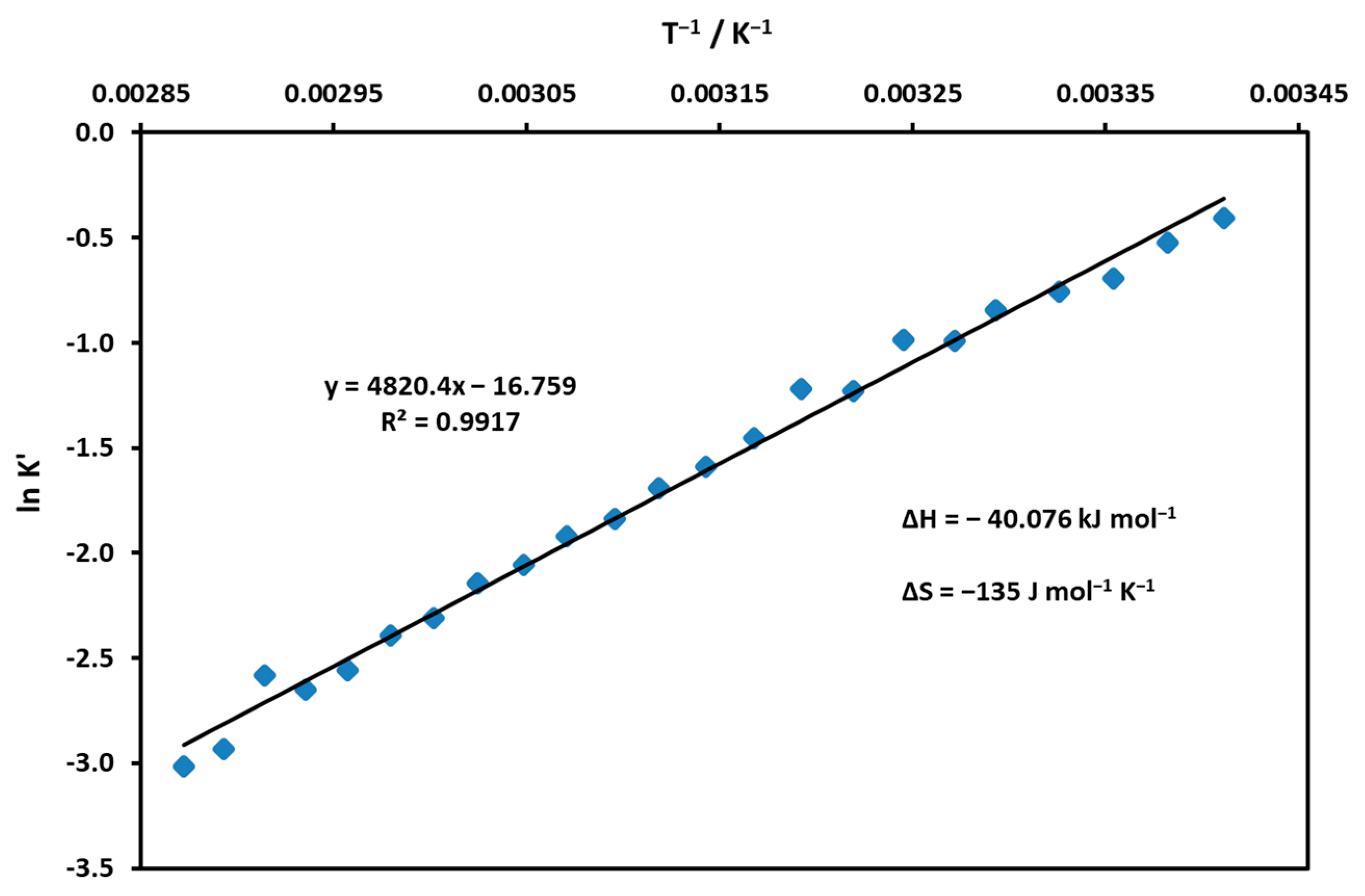
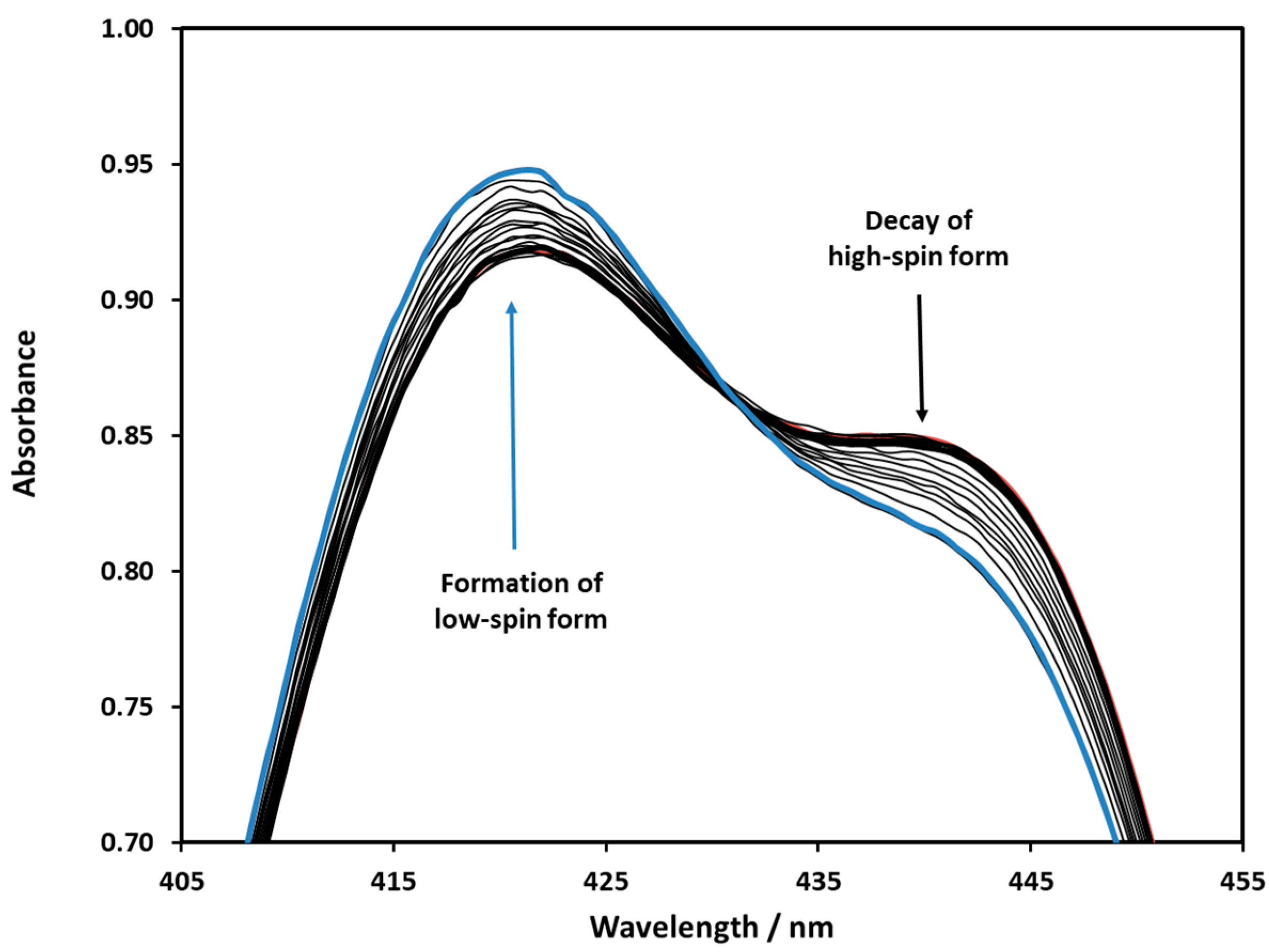

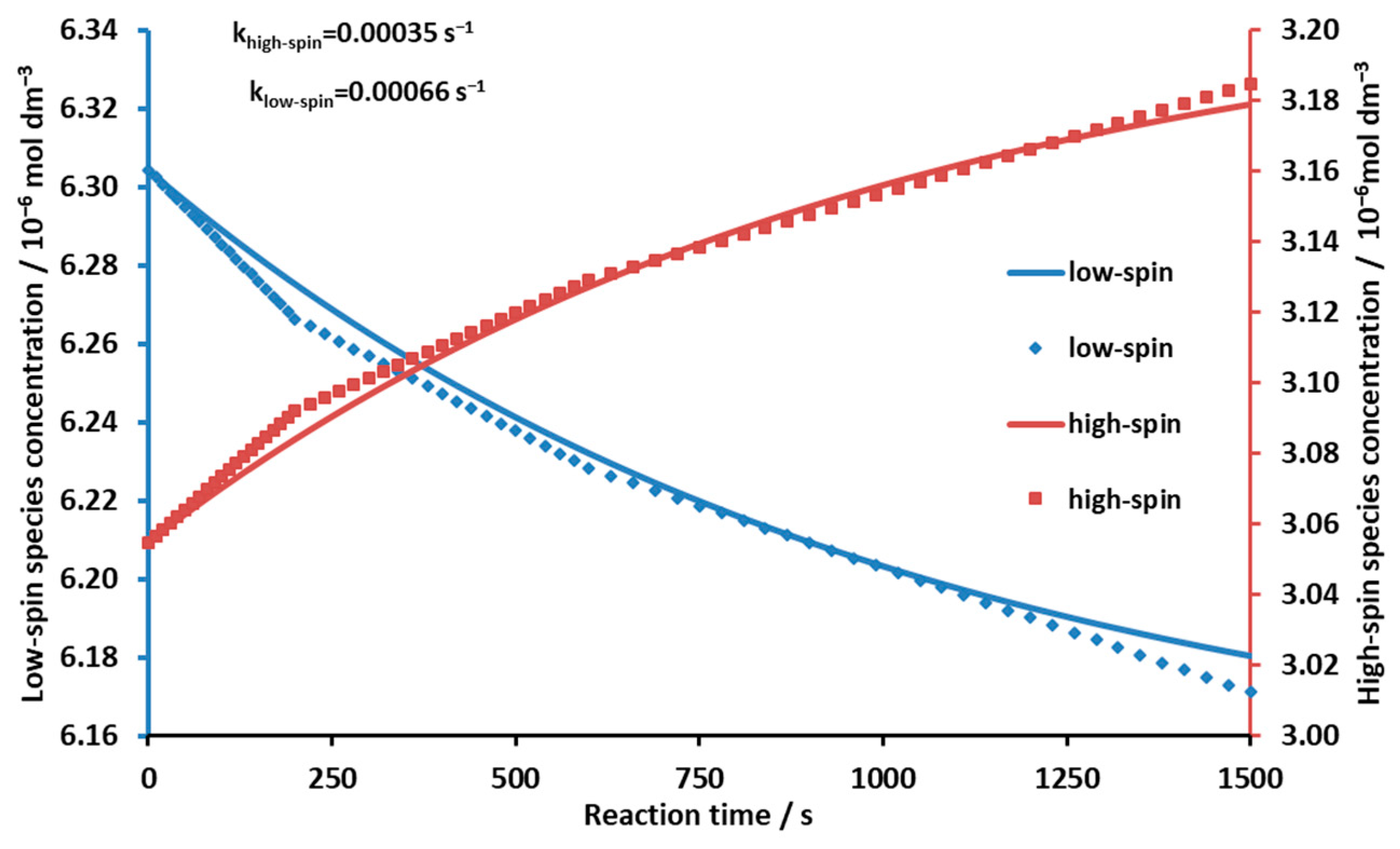




| M | N | B(1,0) | B(0,0) | Q(2,0) | Q(1,0) | Q(0,0) | |
|---|---|---|---|---|---|---|---|
| Wavelength/nm | 325 | 360 | 392 | 420 | 482 | 532 | 566 |
| w1/2/cm−1 | 5280 | 1890 | 2090 | 1720 | 2360 | 952 | 1090 |
| Oscillator strength | 0.226 | 0.0518 | 0.195 | 0.825 | 0.0393 | 0.0412 | 0.0241 |
| M | N | B(1,0) | B(0,0) | Q(2,0) | Q(1,0) | Q(0,0) | |
|---|---|---|---|---|---|---|---|
| Wavelength/nm | 328 | 389 | 418 | 449 | 535 | 570 | 615 |
| w1/2/cm−1 | 6220 | 2870 | 1490 | 1770 | 2210 | 1050 | 1180 |
| Oscillator strength | 0.515 | 0.244 | 0.198 | 0.938 | 0.0395 | 0.0419 | 0.0278 |
Disclaimer/Publisher’s Note: The statements, opinions and data contained in all publications are solely those of the individual author(s) and contributor(s) and not of MDPI and/or the editor(s). MDPI and/or the editor(s) disclaim responsibility for any injury to people or property resulting from any ideas, methods, instructions or products referred to in the content. |
© 2024 by the authors. Licensee MDPI, Basel, Switzerland. This article is an open access article distributed under the terms and conditions of the Creative Commons Attribution (CC BY) license (https://creativecommons.org/licenses/by/4.0/).
Share and Cite
Major, M.M.; Valicsek, Z.; Horváth, O. Effects of Temperature, Axial Ligand, and Photoexcitation on the Structure and Spin-State of Nickel(II) Complexes with Water-Soluble 5,10,15,20-Tetrakis(1-methylpyridinium-4-yl)porphyrin. Molecules 2024, 29, 310. https://doi.org/10.3390/molecules29020310
Major MM, Valicsek Z, Horváth O. Effects of Temperature, Axial Ligand, and Photoexcitation on the Structure and Spin-State of Nickel(II) Complexes with Water-Soluble 5,10,15,20-Tetrakis(1-methylpyridinium-4-yl)porphyrin. Molecules. 2024; 29(2):310. https://doi.org/10.3390/molecules29020310
Chicago/Turabian StyleMajor, Máté Miklós, Zsolt Valicsek, and Ottó Horváth. 2024. "Effects of Temperature, Axial Ligand, and Photoexcitation on the Structure and Spin-State of Nickel(II) Complexes with Water-Soluble 5,10,15,20-Tetrakis(1-methylpyridinium-4-yl)porphyrin" Molecules 29, no. 2: 310. https://doi.org/10.3390/molecules29020310
APA StyleMajor, M. M., Valicsek, Z., & Horváth, O. (2024). Effects of Temperature, Axial Ligand, and Photoexcitation on the Structure and Spin-State of Nickel(II) Complexes with Water-Soluble 5,10,15,20-Tetrakis(1-methylpyridinium-4-yl)porphyrin. Molecules, 29(2), 310. https://doi.org/10.3390/molecules29020310






